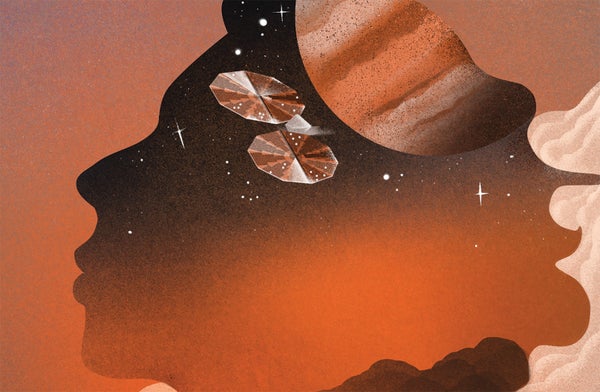Edited by Dava Sobel
A petite fossilized being of the species
Australopithecus afarensis, she lived
in Ethiopia about three million years ago,
walked upright, three and a half feet tall,
and had a pubic arch similar to that
of a modern woman, but a very small brain.
She was named for the Beatles song
“Lucy in the Sky with Diamonds,”
which was played loudly, over and over
again, in the camp of the anthropologists
who found her in the Awash Valley
of the Afar Triangle at the foot of a gully.
On supporting science journalism
If you're enjoying this article, consider supporting our award-winning journalism by subscribing. By purchasing a subscription you are helping to ensure the future of impactful stories about the discoveries and ideas shaping our world today.
Another Lucy, a chimpanzee born
in 1964, learned American Sign Language.
Using 140 signs, she was interviewed
by the New York Times and invited
the reporter into her tree. He declined.
She could have offered to make him tea.
As an adult, she became destructive
when displeased, so her adoptive parents
sent her for rehabilitation in the jungle
of Gambia, but she was depressed there,
often signing “hurt.” She rejected male
chimpanzees, preferring a human mate.
A space mission to the Trojan asteroids
orbiting the sun with Jupiter is also called
Lucy, after the fossil lady from Africa
whose existence shook up the hominin tree.
Lucy the spacecraft will probe mysteries
of organic chemistry and planet formation.
And what about Lucy, the woman raised
on I Love Lucy, who often hears her name
called at dog parks? She is waiting to learn
how hominins morphed into humans, why
chimps and monkeys don’t talk, and how
worlds bloomed in the field of space.
